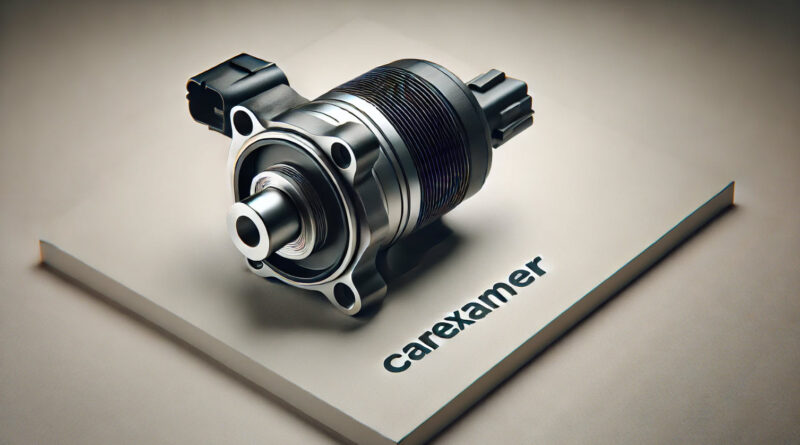What Is Crankshaft Position Sensor, and Why Does It Matter?
Let’s dive into what is crankshaft position sensor does, how it works, and why it’s so important. Ever wondered what keeps your car running smoothly, firing up without hesitation, and delivering power when you need it? Meet the crankshaft position sensor—a small but essential component that helps your car’s engine do its job.
This little sensor is like the timekeeper of your engine, making sure everything happens at exactly the right moment. Without it, your car might struggle to start, run poorly, or even stop running altogether.
What Exactly Is a Crankshaft Position Sensor?
The sensor, often called the CKP sensor, is an electronic device that tracks the position and speed of the crankshaft in your car’s engine. It sends this critical information to the Engine Control Unit (ECU), which then adjusts things like ignition timing and fuel delivery to keep your engine running smoothly.
In simple terms, the crank position sensor is what keeps your engine’s rhythm in check.
How Does It Work?
Here’s how the crank position sensor does its job:
- Sensing Rotation
- The sensor detects how fast the crankshaft is spinning as it turns during engine operation.
- Tracking Position
- It identifies the exact position of the crankshaft, using either a toothed wheel or a magnetic field for reference.
- Communicating with the ECU
- The sensor sends real-time data to the ECU, which uses it to control when the spark plugs fire and how much fuel to inject.
Basically, it’s all about timing—and the crankshaft position sensor ensures it’s spot-on.
Types of Crankshaft Position Sensors
Not all crank position sensors are the same. Here are the main types you might find in cars:
1. Magnetic Sensors
- These rely on a magnetic field to detect the crankshaft’s movement.
- They’re common in older cars and are simple yet effective.
2. Hall Effect Sensors
- These use a magnetic field along with an electronic chip for more precise measurements.
- Popular in modern vehicles.
3. Optical Sensors
- These sensors use light and a detector to track crankshaft rotation.
- They’re highly accurate but less common.
Why Is the Crankshaft Position Sensor So Important?
The crank position sensor isn’t just another gadget in your engine—it’s a vital component that keeps everything running smoothly. Here’s why it matters:
1. Perfect Timing
It ensures the spark plugs fire and fuel injectors deliver fuel at exactly the right moment for efficient combustion.
2. Fuel Efficiency
By providing accurate data to the ECU, the sensor helps your engine burn fuel more efficiently, saving you money at the pump.
3. Smooth Performance
Without this sensor, your engine could misfire, stall, or run rough.
4. Engine Protection
It helps prevent damaging issues like pre-ignition, which can harm your engine over time.
What Happens When It Goes Bad?
A faulty crankshaft position sensor can cause all sorts of headaches. Here are some signs that something might be wrong:
1. Trouble Starting
If the sensor isn’t working, your car might crank but not start, or it could take longer to fire up.
2. Engine Stalling
A failing sensor might cause your engine to cut out unexpectedly, especially at low speeds.
3. Poor Performance
You might notice sluggish acceleration, rough idling, or a general lack of power.
4. Check Engine Light
A bad sensor often triggers the Check Engine Light. A quick diagnostic scan can confirm if it’s the issue.
5. Increased Fuel Consumption
If the timing is off, your engine may burn more fuel than necessary.
What to Do If It Fails
If you think your crank position sensor is acting up, here’s what to do:
- Get a Diagnostic Scan
- Use an OBD2 scanner to identify any fault codes pointing to the sensor.
- Inspect the Sensor
- Check for visible damage, dirt, or loose connections.
- Replace If Needed
- A faulty sensor can’t be fixed, so replacing it is the best option.
- See a Mechanic
- If you’re unsure, a professional mechanic can test and replace the sensor for you.
How to Keep It in Good Shape
The crank position sensor is built to last, but a little care can help it go the distance:
- Keep Your Engine Clean: Dirt and oil can affect the sensor over time.
- Check Wiring: Ensure the sensor’s wiring is secure and free from damage.
- Fix Problems Early: Don’t ignore the Check Engine Light—it could save you from bigger issues later.
Crankshaft vs. Camshaft Position Sensors
The crank position sensor often gets confused with the camshaft position sensor, but they serve different purposes:
| Feature | Crankshaft Position Sensor | Camshaft Position Sensor |
|---|---|---|
| Location | Tracks the crankshaft | Tracks the camshaft |
| Function | Controls ignition timing and fuel injection | Coordinates valve timing |
Why You Shouldn’t Ignore It
A bad crankshaft position sensor might start as a minor inconvenience, but it can quickly lead to serious problems. If left unchecked, it can cause your engine to stall or fail entirely. Replacing it when needed is a relatively simple fix that can save you a lot of trouble in the long run.
Final Thoughts
The crankshaft position sensor may be small, but it’s essential for keeping your car’s engine running smoothly. By tracking the crankshaft’s position and speed, it ensures everything happens in perfect sync—giving you better performance, fuel efficiency, and reliability.
If you notice signs of trouble, don’t wait. A healthy crankshaft position sensor is key to keeping your car in top shape and ensuring you enjoy a smooth, worry-free ride every time you hit the road.
Buying a used VW. Buying used vauxhall, BMW, Jaguar, Ford, Volvo, Range rover, Bentley, Aston Martin, Porsche, Ferrari, Lamborghini, Maserati, Hyundai, Tesla, Honda, Pagani

